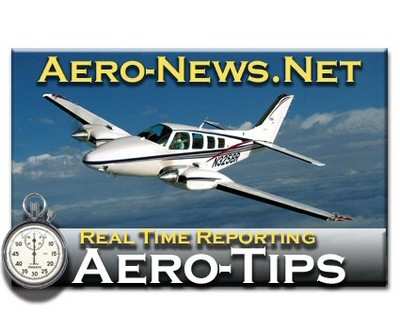Aero-Tips!
A good pilot is always learning -- how many times have you heard
this old standard throughout your flying career? There is no truer
statement in all of flying (well, with the possible exception of
"there are no old, bold pilots.")

Aero-News has called upon the expertise of Thomas P. Turner,
master CFI and all-around-good-guy, to bring our readers -- and us
-- daily tips to improve our skills as aviators. Some of them, you
may have heard before... but for each of us, there will also be
something we might never have considered before, or something that
didn't "stick" the way it should have the first time we memorized
it for the practical test.
Look for our daily Aero-Tips segments, coming each day to you
through the Aero-News Network.
Aero-Tips 11.13.06
We all do things we're not terribly proud of. One of those dark
secrets of my past: I towed banners.
Now, banner towing is an honest occupation. It involves spending
hours weaving together the letters and symbols that make up a
banner (I imagine the process is simpler now, but the last banner I
was paid to tow read "Elect Bush and Quayle", so it's been a
while). Then you have to lay the banner out carefully on a flat
piece of ground, usually on or alongside a runway. From the banner
you string a tough line that hooks at the top and bottom of a pole
that forms what will be the leading edge of the banner in flight,
along the ground several dozen feet and then 12 to 15 feet in the
air between some flimsy poles. You want flimsy poles, not stiff
ones, in case you hit one (just kidding).
Now you launch the airplane with a tow cable and hook attached.
The tow hook on our very tired 160-hp Cessna 172 was a
three-pronged grappling hook. The cable attached to a quick-release
hook mounted (with Supplemental Type Certificate authority) where
the tail tie-down ring usually goes. The cable is not retractable,
so you need to string the cable along the side of the fuselage and
take off with the hook in the cabin. I found eventually that
bringing the cable in through the open copilot window, and securing
the hook with the seat belt in the right seat, gave me a
quick-release for the hook. After takeoff you throw the hook
overboard and (if it doesn't bounce of the tail or, as just now
occurs to me 16 years later, jams in the elevator or rudder) it
streams out behind the airplane.
Hook deployed, it's time for a bomb-run at the airport. The hook
trailed about eight feet below the airplane, if I remember
correctly, so the idea was to fly level at the rope between those
flimsy poles just high enough that the propeller and landing gear
cleared the top. It helped A LOT to have the airport manager
volunteering on a handheld radio giving me "fly higher, fly lower"
guidance to make the snag. He probably had his pre-cell phone CB
radio handy to call the fire department if needed, also.
When all was in place and the hook about to hit the banner rope
I'd hear "go, go, go!" on the radio, which was my cue to hit full
power and pull up sharply. To get the lead-pole of the banner
cleanly off the ground it took an extreme pitch attitude, far
steeper than Vx, so that the banner jerked up, not forward, as it
left the earth. That's when the drag kicked in, and indicated
airspeed dropped 20 knots or more. Once I felt the drag I had to
push the nose over into Vx attitude to avoid a rapid stall. My hand
was on the "gear shift" mounted between the seats (part of the STC)
that was the banner release in case airspeed got too low in the
snag.
After a very slow climb to about 1000 feet -- optimal, I was
told, for banner readability -- I'd fly a prescribed track until
the engine overheated (full throttle netted only about 80 knots
indicated airspeed with a banner in tow, bad for cooling) or I was
low on fuel to get the maximum utility out of the huge time
investment of getting airborne. Then it was back to the airport and
fly low over the drop zone, but not so low the banner snagged a
tree or a fence. Pull the gear shift and the banner dropped,
amazingly almost straight down because of its enormous drag. Then
climb into the pattern and land.
It was about as jury-rigged and on-the-edge as anything I've
ever flown, which is why I'm not proud of doing it <g>. I'm
sure most banner operations are a lot more professional... and
profitable.
Aero-tip of the day: Don't get yourself talked
into anything that seems thrown together haphazardly. Aim for more
professionalism that I had at the beginning of my commercial
career.
 NBAA Responds To GA/BA Operational Restrictions
NBAA Responds To GA/BA Operational Restrictions Boeing Deliveries Surge to Pre-Pandemic Levels
Boeing Deliveries Surge to Pre-Pandemic Levels Spirit Forecasts Financial Turbulence
Spirit Forecasts Financial Turbulence Singapore Adds a Price Tag to Going Green
Singapore Adds a Price Tag to Going Green NTSB Final Report: Arlie L Raber III Challenger 1
NTSB Final Report: Arlie L Raber III Challenger 1



